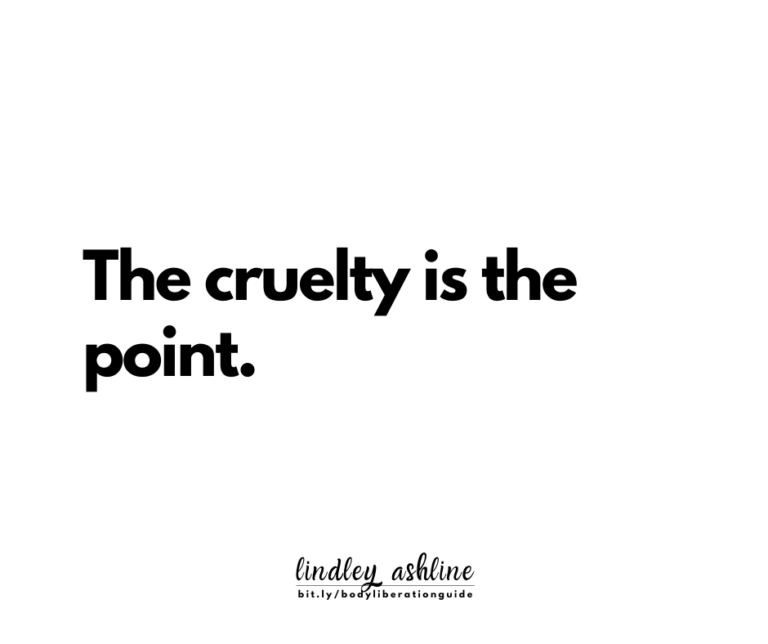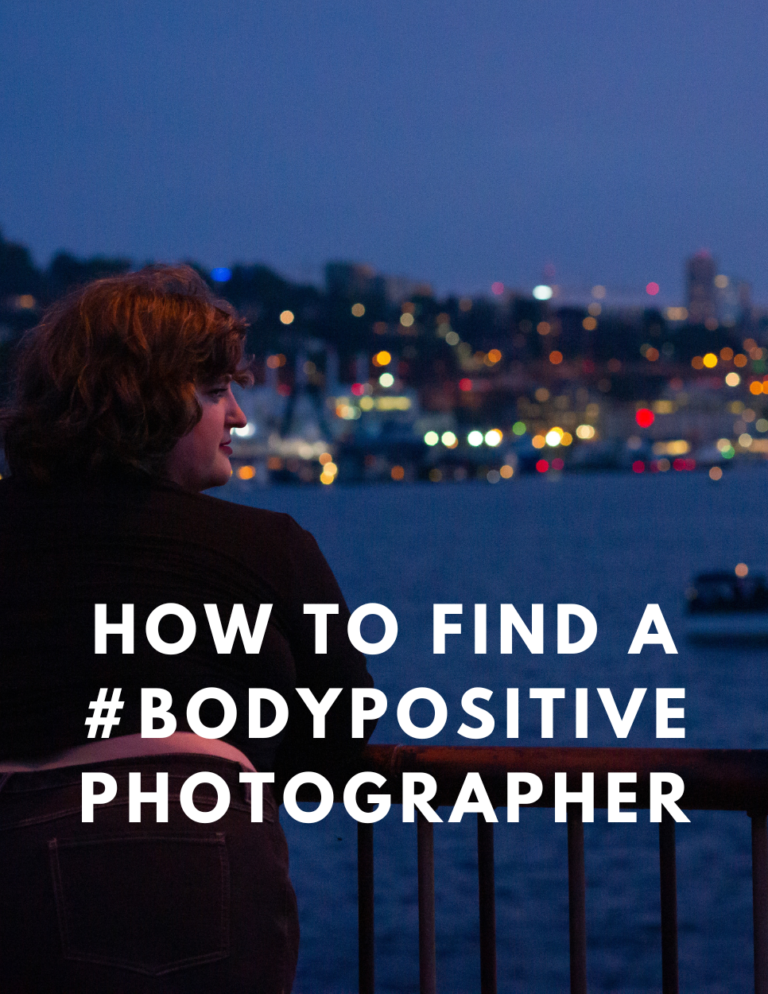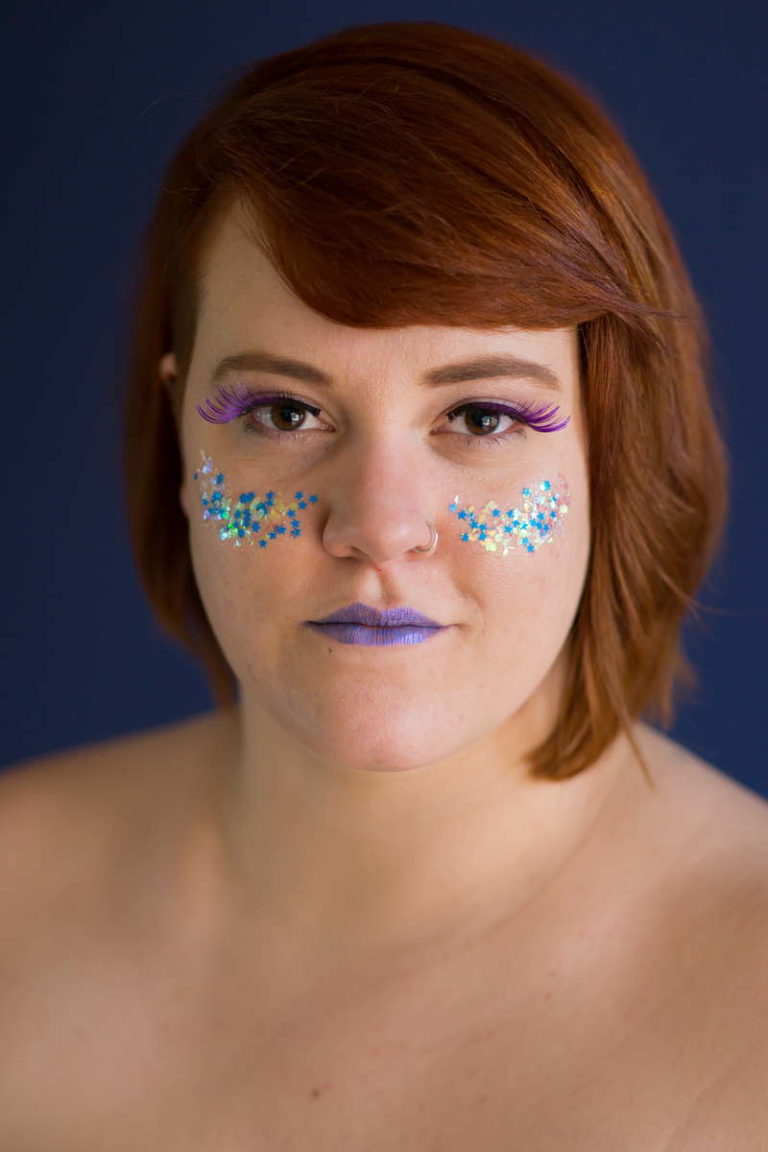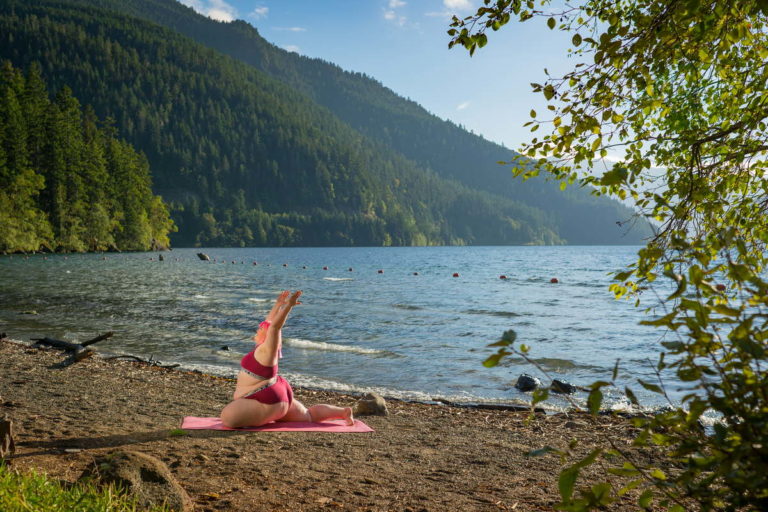What fat liberation means to me: It’s not just about “all bodies”
This piece originally appeared over at the NAAFA blog.
Loving, admiring, and respecting fat bodies can be really hard for people to grasp.
We as a culture have been trained by:
- Centuries of sexism and racism that women are sexual objects
- 75 years of diet culture that thin is beautiful and sexy
- And decades of commercials that thin is easy to attain
(And that failures to attain that status are entirely due to individual willpower, as opposed to normal human biology.) All of which means that it’s very, very easy for us to ascribe moral value and worth to thin bodies and a lack of those things to fat bodies. When we as a society systemically deny certain bodies equal worth, access and value, that’s oppression, and that’s why fat liberation is vital to a just and fair world.
What is fat liberation?
For me, fat liberation is the deliberate work of tearing down the systems that have created a world where fat people are denied full participation in society and life, from apparel to healthcare.
Is fat liberation different from body liberation?
Though I happily identify publicly with lots of interrelated movements — body acceptance, fat acceptance, body positivity, fat activism, body liberation, fat liberation, Health at Every Size® (HAES) — each one focuses on a different aspect of body image, healthcare and other facets of how bodies exist in the world.
Though I tend to use the terms “body liberation” and “fat liberation” interchangeably, that’s not a universal view, and many people do see them as different things.
Fat liberation vs. body positivity
It’s important to understand that the body positivity movement stems directly from the work of fat activists and fat liberationists. At its core, body positivity seeks to center body liberation efforts on thin and thinner white women, which is — to put it mildly — an issue.Just being body positive runs the risk of ignoring the systemic issues that elevate some bodies above others in the first place. The best way to ensure we don’t fall into this trap is to return again and again to liberation and asking these questions:
- Who is being centered right now?
- Who’s profiting?
- What about the most marginalized people?
- How can what I’m doing help people with less privilege than me?
As Sarah Simon says in Ms. Magazine, “Fat is also a queer issue, and a racialized issue, and an issue of class—because fatness is inseparable from all other intersections of identity.”
It’s even more important to understand that fat oppression stems from hundreds of years of racism, and that fat Black bodies are doubly oppressed. (Sabrina Strings’ book Fearing the Black Body is an excellent look at how this came about.)
Anti-racism work is an inherent part of fat liberation; we can only achieve fat and body liberation by working to end racism as well.
How I got here
Way back in 2007, I discovered the Fatshionista community on Livejournal and it blew my mind. Fat people! Being confident and stylish! In their current bodies! From there I learned all about fat acceptance and got involved in the community, and gradually involved in activism as well.
In 2015, I quit my crappy corporate job and started what’s now Body Liberation Photos.
Fat liberation as an activist and business owner
Pretty much everything I do is centered on fat liberation. My photography work primarily serves fat people, and my activism, writing and other work are all about lifting up and liberating fat bodies. I’m helping create a world where fat bodies are treated equally and have equal access to healthcare, fitness, and being treated with dignity and care.
Here are a few of the ways I incorporate body liberation and fat liberation into my work. I hope they inspire you to do the same!
Paying my models. Not every photographer pays their models — or pays them a living wage — but it’s important to me not to take advantage of the time and labor of marginalized people. Anyone who models for my stock photos can choose a living hourly wage or to be compensated with finished photos.
Prioritizing the most marginalized. People who are very fat (some of whom identify as superfat or infinifat); Black, indigenous and other people of color; and the LGBTQIAP+ community are always prioritized as models and clients.
That looks like not only prioritizing those folks when they want to model for stock photos, but prioritizing their images in my portfolio, on my website and in my marketing. Representation matters, everywhere, all the time.
(It also looks like offering a discount to marginalized people on the toolkit and book I created on sustainable marketing, allowing small business owners to access my work and time — the toolkit includes a meeting with me — at a more affordable price.)
Charging a living wage. Respecting my own time, labor and need for food and shelter as a marginalized person is also important to me, so I charge a living wage for my client photography sessions (boudoir, portrait, product and branding).
An objection I occasionally hear is that charging a living wage myself makes photo sessions inaccessible financially to other marginalized people. It’s true that not everyone will be able to afford to work with me as a client, so I’m glad to be able to offer stock photo modeling as well, under the terms I talk about above.
That way, people who might not otherwise be able to work with me can have a similar nurturing experience in front of the camera.

Every Monday, I send out my Body Liberation Guide, a thoughtful email jam-packed with resources on body liberation, weight stigma, body image and more. And it’s free. Let’s change the world together.
Hi there! I'm Lindley. I create artwork that celebrates the unique beauty of bodies that fall outside conventional "beauty" standards at Body Liberation Photography. I'm also the creator of Body Liberation Stock and the Body Love Shop, a curated central resource for body-friendly artwork and products. Find all my work here at bodyliberationphotos.com.








